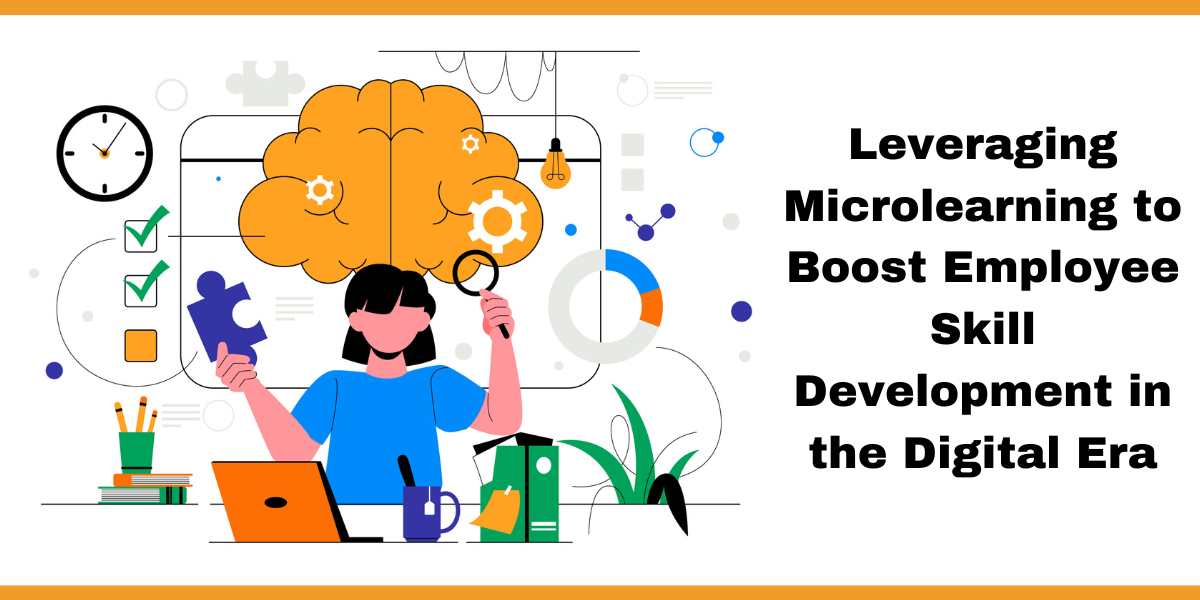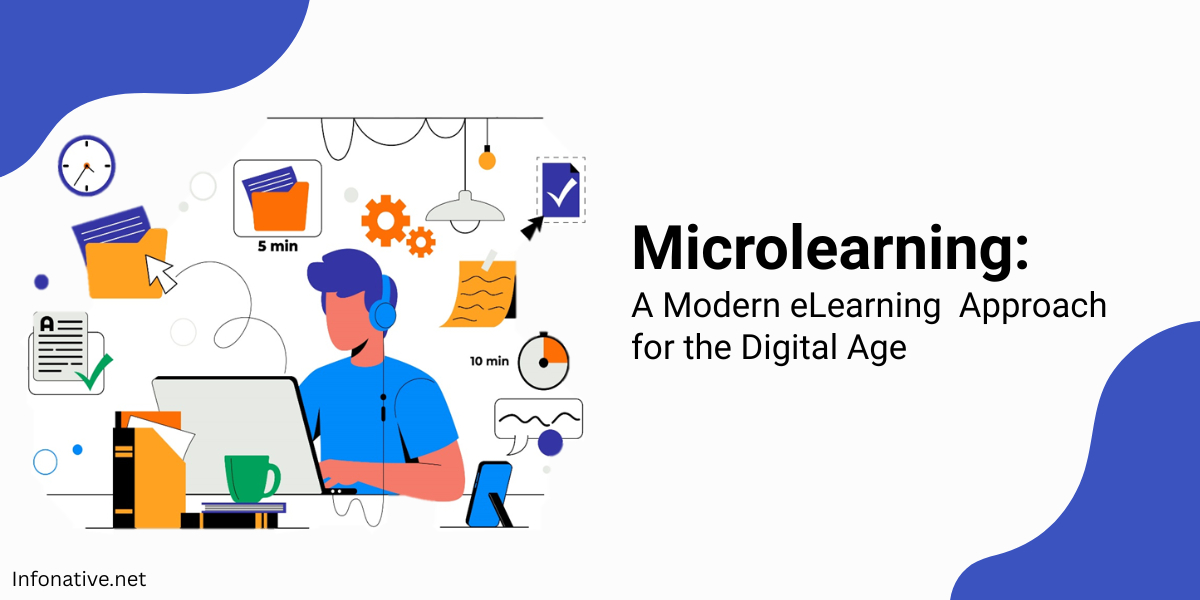In today’s rapidly evolving digital landscape, companies are increasingly adopting innovative methods to enhance employee skills and stay competitive. One such method gaining momentum is microlearning, a modern, bite-sized approach to training. With its focus on delivering short, focused learning sessions, microlearning is transforming employee skill development, making it more accessible, flexible, and engaging than ever before.
As organizations continue to embrace digital tools and technologies, the traditional methods of employee training are being replaced by more dynamic, on-demand learning formats. Microlearning offers an ideal solution for organizations looking to keep their workforce sharp, adaptable, and ready for the challenges of the digital era.
What is Microlearning?
Microlearning refers to short, focused learning experiences that are designed to address specific skills or knowledge gaps. Unlike traditional, long-form training sessions, microlearning delivers content in small chunks, typically ranging from a few seconds to 10 minutes. This approach enables employees to learn in manageable portions, making it easier to absorb and retain information.
The key features of microlearning include:
● Short Duration: Sessions are brief, typically no longer than 10-15 minutes.
● Focused Content: Each module targets a specific skill or knowledge area.
● On-Demand Access: Employees can access learning materials at any time and from any device.
● Engagement: Interactive elements like quizzes, videos, and infographics keep learners engaged.
The Rise of Digital Learning
With the shift towards digital tools and technologies, traditional corporate training methods are being replaced by more flexible, accessible, and scalable solutions. The digital transformation has reshaped the way organizations approach learning and development, allowing employees to access training materials anytime, anywhere.
Digital learning platforms have become increasingly popular for their ability to deliver engaging, interactive content that suits a wide range of learning preferences. Microlearning fits seamlessly into this digital ecosystem, enabling organizations to provide employees with bite-sized, engaging learning experiences that can be consumed on the go.
Why Microlearning is Effective for Employee Skill Development
Microlearning is particularly effective for skill development because it delivers content in short, digestible chunks. This allows employees to focus on one specific skill at a time, increasing their chances of mastery and retention. By breaking down complex topics into smaller segments, employees are able to grasp information more easily, without feeling overwhelmed.
Microlearning also promotes active engagement, as it encourages employees to participate in learning through videos, quizzes, and interactive exercises. Studies show that employees retain information more effectively when they actively engage with the content, rather than passively absorbing it.
Key Benefits of Microlearning for Employees
● Flexibility and Convenience: Employees can access microlearning content whenever it fits into their schedules, making it easier to balance work and training.
● Accessibility Across Devices: Microlearning can be accessed on smartphones, tablets, and computers, ensuring that employees can learn from anywhere.
● Personalized Learning Experiences: Microlearning allows employees to learn at their own pace, choosing the content that aligns with their specific needs and interests.
Types of Microlearning Formats
There are several ways to deliver microlearning content, depending on the learning objectives and preferences of the employees. Some popular formats include:
1. Video-Based Microlearning: Short, engaging videos that focus on a single concept or skill.
2. Infographics and Visual Aids: Easy-to-digest visuals that convey key information in a concise, engaging format.
3. Interactive Quizzes and Assessments: Self-assessment tools that allow employees to test their knowledge and reinforce learning.
4. Mobile Learning Apps: Dedicated apps that allow employees to access training materials on the go, offering a flexible, personalized learning experience.
How to Implement Microlearning in Your Organization
To successfully implement microlearning in your organization, follow these steps:
1. Choose the Right Platform: Select a learning management system (LMS) that supports microlearning and integrates with your existing tools.
2. Create Bite-Sized Content: Break down complex topics into small, digestible modules that focus on specific skills or knowledge areas.
3. Integrate with Existing Training Programs: Microlearning should complement, not replace, traditional training methods. Use it to reinforce key concepts or fill knowledge gaps.
Challenges of Microlearning
While microlearning offers numerous benefits, it also comes with its own set of challenges. These include:
● Balancing Content Quantity and Quality: It can be difficult to condense complex topics into short, engaging sessions without oversimplifying important concepts.
● Avoiding Content Overload: Too much content can overwhelm employees, so it's important to curate microlearning materials that are relevant and impactful.
● Adapting Content for Different Learning Styles: Not all employees learn the same way. It’s crucial to create content that accommodates a variety of learning preferences.
Measuring the Effectiveness of Microlearning
To gauge the success of microlearning programs, organizations should track key performance indicators (KPIs), such as:
● Employee engagement rates
● Knowledge retention and application
● Completion rates of microlearning modules
Best Practices for Leveraging Microlearning in the Workplace
1. Align Content with Organizational Goals: Ensure that microlearning modules align with your company’s overall training objectives.
2. Keep It Concise: Each module should focus on one key takeaway, keeping content clear and concise.
3. Encourage Continuous Learning: Create a culture of learning by regularly updating content and encouraging employees to participate in microlearning sessions.
Case Studies: Successful Microlearning Implementations
● Company A: By implementing a mobile-based microlearning app, Company A saw a 40% increase in employee engagement and a 25% improvement in retention rates.
● Company B: Through the use of interactive video-based microlearning, Company B reduced training time by 30% and saw a significant improvement in skill development across teams.
The Future of Microlearning in the Digital Age
As technology continues to advance, the future of microlearning looks promising. The rise of artificial intelligence (AI) and machine learning will likely play a major role in personalizing microlearning experiences, allowing content to adapt to individual learning preferences and needs.
How Microlearning Fits into a Broader Learning Strategy
Microlearning should be viewed as part of a broader, integrated learning strategy. By blending microlearning with traditional training methods, organizations can create a hybrid learning environment that meets the diverse needs of employees.
Conclusion
In the digital era, microlearning offers a powerful tool for enhancing employee skill development. Its flexibility, accessibility, and engaging format make it an ideal solution for organizations looking to improve training outcomes. By implementing microlearning effectively, organizations can empower their employees to acquire new skills, stay ahead of industry trends, and remain competitive in an ever-changing business environment.




